
Panzer General is a 1994 computer wargame developed and published by Strategic Simulations Inc. (SSI). It simulates conflict during World War II. The designers of Panzer General were heavily influenced by the Japanese wargame series Daisenryaku.
Strategic Simulations, Inc. (SSI) was a video game developer and publisher with over 100 titles to its credit from its founding in 1979 to its dissolution in 1994. The company was especially noted for its numerous wargames, its official computer game adaptations of Dungeons & Dragons, and for the groundbreaking Panzer General series.

Gary Grigsby is a designer and programmer of computer wargames. In 1997, he was described as "one of the founding fathers of strategy war games for the PC." Computer Games Magazine later dubbed him "as much of an institution in his niche of computer gaming as Sid Meier, Will Wright, or John Carmack are in theirs."

Computer Bismarck is a computer wargame developed and published by Strategic Simulations (SSI) in 1980. The game is based on the last battle of the battleship Bismarck, in which British Armed Forces pursue the German Bismarck in 1941. It is SSI's first game, and features turn-based gameplay and two-dimensional graphics.
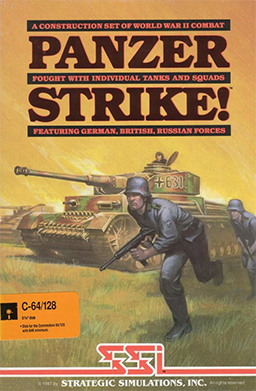
Panzer Strike is a 1988 tactical wargame that simulates small unit actions during World War II. It was made for Apple II and Commodore 64 and was released by Strategic Simulations.

Bomb Alley is a 1983 computer wargame designed by Gary Grigsby for the Apple II and published by Strategic Simulations in 1983. It covers the Mediterranean Theatre of World War II.
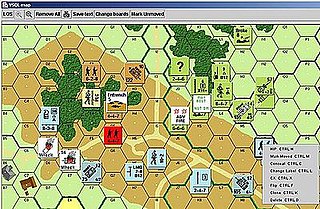
A computer wargame is a wargame played on a digital device. Descended from board wargaming, it simulates military conflict at the tactical, operational or strategic level. Computer wargames are both sold commercially for recreational use and, in some cases, used for military purposes.
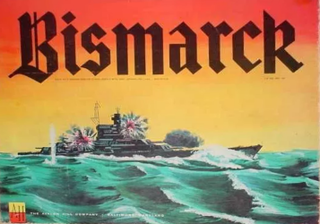
Bismarck is a board wargame published by Avalon Hill in 1962 that simulates the hunt for the Bismarck.

Red Storm Rising is a simulation video game based on Tom Clancy's 1986 novel Red Storm Rising and released in 1988 by MicroProse. The player is put in charge of an American SSN submarine in the Norwegian Sea Theater with the overall role of a hunter killer performing various missions in the context of the global conflict described in the book representing a campaign. Its original Commodore 64 version was co-designed and co-programmed by the famous game designer Sid Meier.

Gary Grigsby's Pacific War is a 1992 strategy wargame released by Strategic Simulations, Inc. It covers World War II in the Pacific between the Japanese Empire and the Allies, which include the United States, the British Empire, the Netherlands, Australia, New Zealand, Canada, the Philippines, and China. The main map of the game stretches from north of the Aleutians to southern New Zealand and Australia, and from the eastern coast of India to the West Coast of North America. It includes aircraft carrier operations, amphibious assaults, surface bombardments/engagements, strategic bombing, kamikazes, and the submarine war against naval and merchant shipping.

Carriers at War 1941-1945: Fleet Carrier Operations in the Pacific is a 1984 computer wargame by Strategic Studies Group for Apple II and Commodore 64. The game was designed by Roger Keating and Ian Trout. A remake, Carriers at War, was released for DOS in 1992. A sequel to the remake, Carriers at War II, was released for DOS and Mac OS in 1993. A second remake was published by Matrix Games in 2007 for Microsoft Windows.
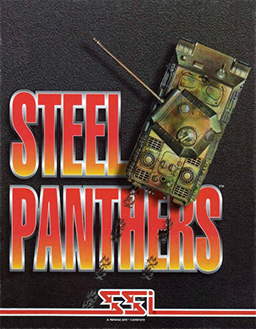
Steel Panthers is a 1995 computer wargame developed and published by Strategic Simulations. Designed by Gary Grigsby and Keith Brors, it simulates ground warfare during World War II, across the Western Front, Eastern Front and Pacific Theatre.

Torpedo Fire is a turn-based submarine warfare game written by John Lyon for the Apple II and published by Strategic Simulations in 1981.

War in Russia is a 1984 computer wargame developed and published by Strategic Simulations for the Apple II and Atari 8-bit computers. It was designed by Gary Grigsby.

Guadalcanal Campaign is a 1982 computer wargame developed by Gary Grigsby and published by Strategic Simulations, Inc. (SSI). It was Grigsby's first released game and has been cited as the first monster wargame made for computers.

Carrier Force is a 1983 computer wargame published by Strategic Simulations for the Apple II, Atari 8-bit computers, and Commodore 64.
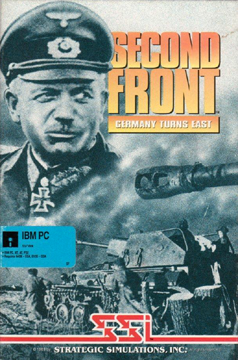
Second Front: Germany Turns East is a 1990 computer wargame developed and published by Strategic Simulations Inc. (SSI). Designed by Gary Grigsby, it is a spiritual successor to his earlier game War in Russia.
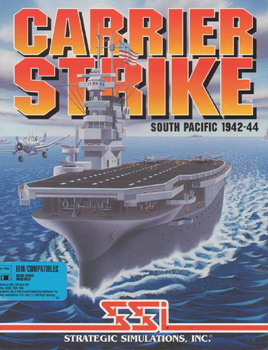
Carrier Strike: South Pacific 1942-44 is a 1992 computer wargame designed by Gary Grigsby and published by Strategic Simulations Inc. It is a successor to Grigsby's earlier title Carrier Force.

Battle Cruiser is a 1987 computer wargame designed by Gary Grigsby and published by Strategic Simulations Inc. (SSI). It is the follow-up to Grigsby's earlier Warship.
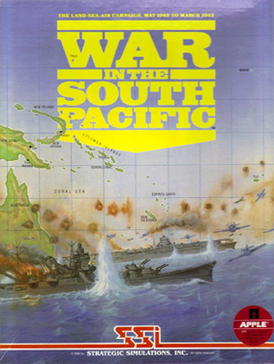
War in the South Pacific is a 1987 computer wargame designed by Gary Grigsby and published by Strategic Simulations. It is classified as a monster wargame.



















